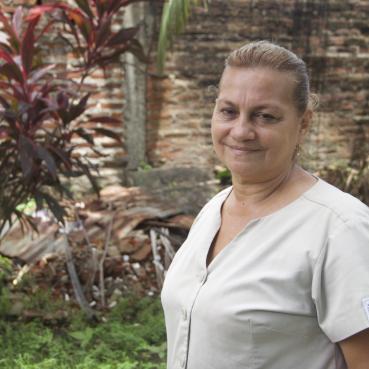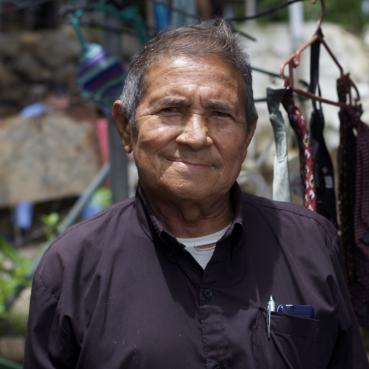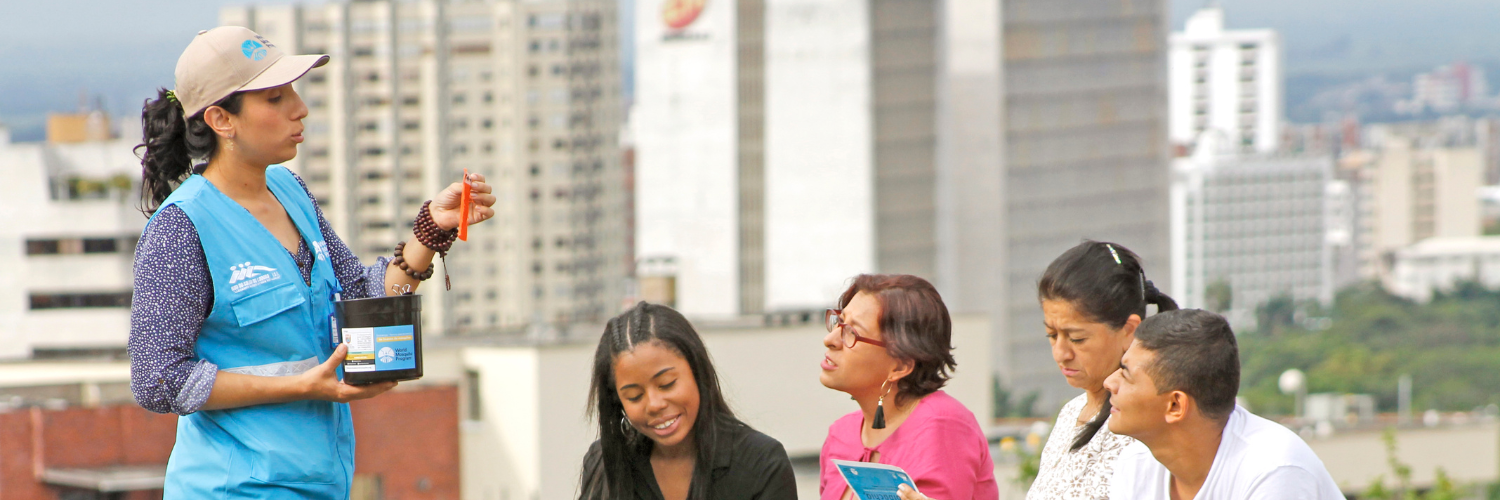
Published date: 24 Dec 2021
By: Jessica Jones
The canton of Metalío, in the department of Sonsonate, El Salvador, is characterized as a very touristic area due to the variety and beauty of its beaches. It is a sui generis vision: the visitors enjoying a vacation contrast with the poverty of those living in the surrounding areas.
The Health Unit is located in the center of Metalío. Its residents still remember that it was 2014 when they first heard about the disease chikungunya, and how, in a few weeks, thousands were infected. Juanita, a health promoter for 35 years, works there. She, like many others, contracted the disease during the outbreak.
"We had never experienced chikungunya here. So, when I began to suffer from bone and joint pain and fever, I knew it was not normal, that I had to go to the doctor," Juanita explains.

In June 2014, El Salvador faced its first outbreak of the chikungunya virus. A combination of lack of resources, education and an environment favorable to the breeding of Aedes Aegypti mosquitoes, the mosquito that transmits the virus, caused a fast spread of the disease among the country's cantons. In the end, 167,000 cases were registered, part of them in the department of Sonsonate. Years later, the community still remembers the pain of the outbreak.
Familiar with dengue outbreaks, the residents of Sonsonate improvised with homemade and empirical remedies. The use of repellents, mosquito nets or clothes that cover the skin is not always possible, even now.
The heat and humidity in the environment are high and constant from the early hours of the morning. At the entrance of a hut stands Rocio, a volunteer health promoter in the area and single mother of four children. She, like Juanita, had chikungunya.

This event marked Rocio's life, as she is the only breadwinner in her household. The virus affected her job performance, as the after-effects of chikungunya impacted her joints, reducing her ability to work.
At a critical point in the chikungunya outbreak, non-governmental organizations, together with the Ministry of Health, organized to implement the Technical Guidelines for the Prevention and Control of Chikungunya Fever (an emerging document issued by MINSAL during the outbreak), in the hope of halting the rapid advance of the disease.
For Juanita, the support of the organizations coordinated with MINSAL was key, since most of the villages did not have the ideal prevention methods to avoid contracting the virus. "We made a joint effort: extensive fumigation campaigns, delivery of repellents, mosquito nets and cleaning in the area."
In 2021, 64 suspected cases of chikungunya and zero deaths have been reported in the country, according to the latest bulletin issued by the Ministry of Health. However, the danger of a new wave is possible, and the resources to combat it are limited.
In search of a sustainable, equitable and long-term way to battle diseases transmitted by the Aedes Aegypti mosquito, the World Mosquito Program is reaching out to countries where dengue, Zika, yellow fever and chikungunya are wreaking havoc on the population and the health system.
Through WMP´s Wolbachia method, the bacteria are introduced into the eggs of Aedes Aegypti mosquitoes. Upon hatching, the bacteria will fight the virus for proteins inside the mosquito, thereby reducing the ability of the virus to reproduce and be transmitted through the mosquito's bite. In addition, part of the solution focuses on mosquito reproduction: those that already carry Wolbachia will breed with native mosquitoes, transmitting the bacteria and thereby advancing protection against these diseases.
However, while these types of procedures are coming to El Salvador, people like Don Manuel, who due to his advanced age was heavily affected after his convalescence from chikungunya, are trying to strengthen prevention.


